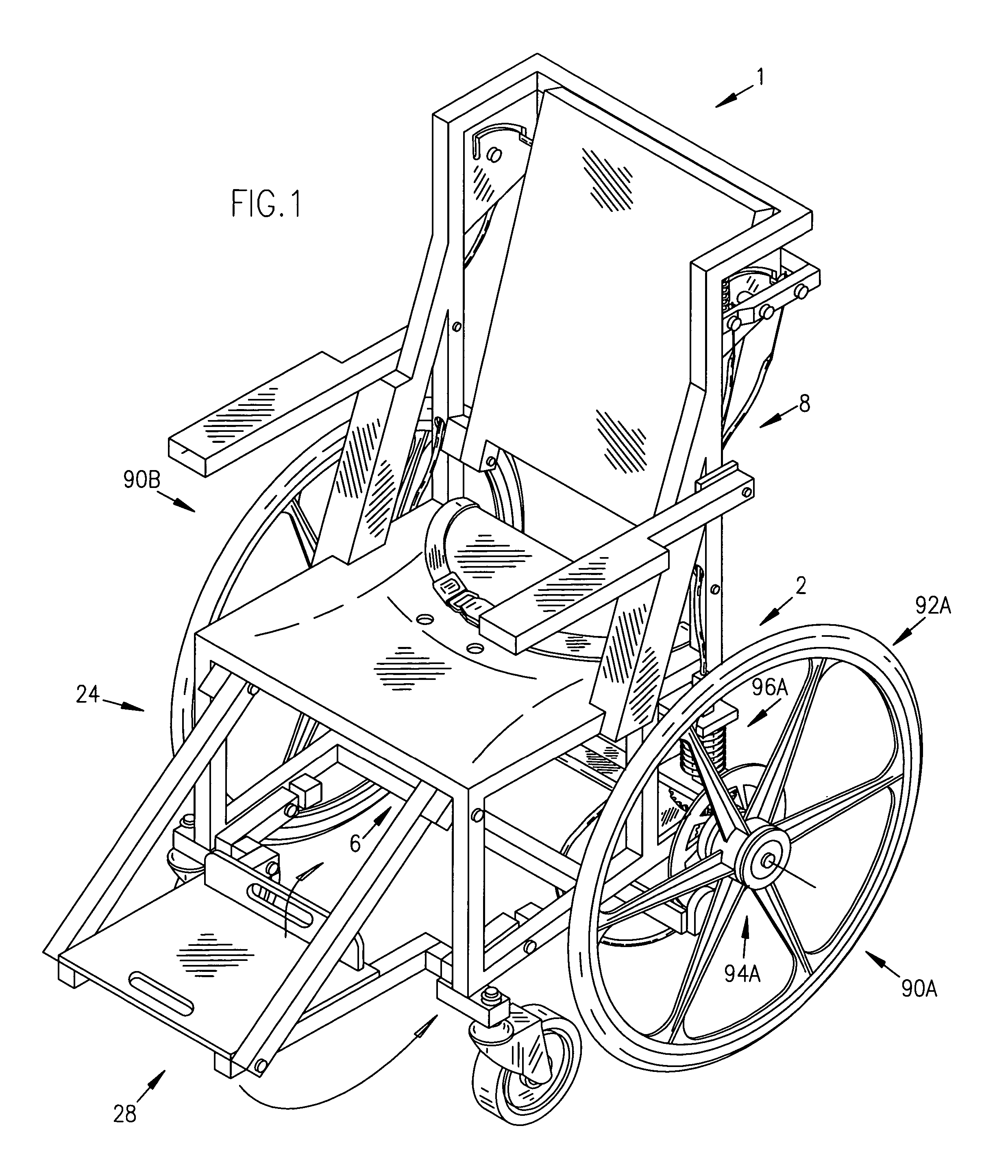Assistive mobility device
a technology for wheelchairs and mobility devices, applied in the field of wheelchairs, can solve the problems of not having a positive locking mechanism, not being able to ensure the wheelchair will remain stationary, and not being able to automatically engage the locking mechanism, so as to simplify the tasks of an assistant
- Summary
- Abstract
- Description
- Claims
- Application Information
AI Technical Summary
Benefits of technology
Problems solved by technology
Method used
Image
Examples
Embodiment Construction
[0042]A typical embodiment of the device of the present invention is illustrated in FIGS. 1-3. A wheelchair 1 has a rigid chair frame 2, which comprises a seat support 4, an opposing pair of forward vertical legs, 20a and 20b, an opposing pair of rear vertical legs 22a and 22b, a back support 8, and armrest supports 10a and 10b. The seat support 4 is a rigid rectangular horizontal bar. A seat 12 is attached to the seat support 4 and contains holes 11 for drainage. The wheelchair can include a seatbelt 99. A chassis 6 supports the chair frame 2. The chassis 6 comprises an opposing pair of parallel horizontal rigid wheel support bars, 14a and 14b, that are interconnected by a perpendicular forward horizontal rigid brace 16 and perpendicular rear horizontal rigid brace 18.
[0043]Referring to FIGS. 2-4, the back support 8 comprises opposing vertical back support bars 58a and 58b, a horizontal U-shaped push-bar handle 60, a seat back 62, and seat back guide plates 68a and 68b. The back su...
PUM
 Login to View More
Login to View More Abstract
Description
Claims
Application Information
 Login to View More
Login to View More - R&D
- Intellectual Property
- Life Sciences
- Materials
- Tech Scout
- Unparalleled Data Quality
- Higher Quality Content
- 60% Fewer Hallucinations
Browse by: Latest US Patents, China's latest patents, Technical Efficacy Thesaurus, Application Domain, Technology Topic, Popular Technical Reports.
© 2025 PatSnap. All rights reserved.Legal|Privacy policy|Modern Slavery Act Transparency Statement|Sitemap|About US| Contact US: help@patsnap.com



